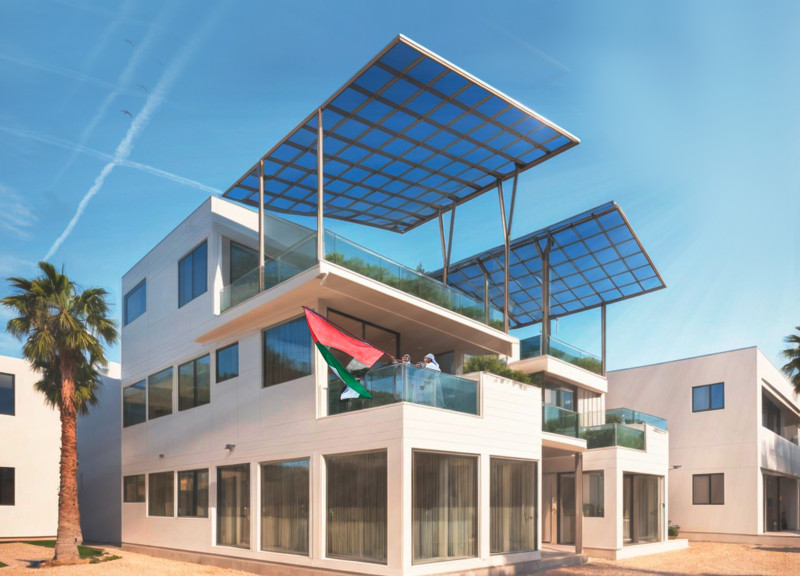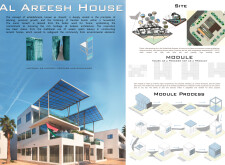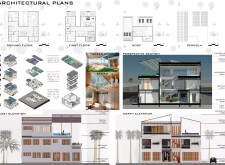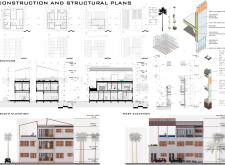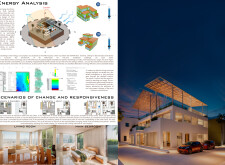5 key facts about this project
### Project Overview
The Al Areesh House is located in Dubai, United Arab Emirates, and integrates traditional Arabian architecture with modern sustainable design techniques. The project responds to the local climate by embodying the concept of *Arees*, meaning "home" in Arabic, which highlights its connection to the community. The design intent focuses on fostering familial bonds and reflecting cultural heritage through innovative architectural solutions.
### Material Innovation and Sustainability
The architecture prioritizes materiality as a means of honoring cultural history while ensuring environmental sustainability. Key materials include Oriented Strand Board (OSB) for structural framing, steel for structural integrity, and strategically placed glass for natural light optimization and thermal regulation. The incorporation of a green roof structure not only enhances insulation but also lessens heat gain. Palm leaves are subtly integrated into design accents, linking the contemporary home with traditional building practices. The exterior features a balance of clean, modern finishes alongside textured wall coverings and wooden elements, contributing to both aesthetic appeal and functional performance.
### Spatial Configuration and Energy Efficiency
The layout comprises modular units designed for flexibility and adaptability, allowing spaces to fulfill various functions based on family needs. A dedicated circulation module enhances natural light and airflow, promoting energy efficiency. Privacy modules incorporate operable screens to maintain personal space while preserving community interaction. The house employs passive cooling techniques and integrates photovoltaic panels, aligning with regional sustainability goals. The project aims for an Energy Use Intensity (EUI) of 156 kWh/m²/year, representing significant energy efficiency compared to the regional average for net-zero homes. The thoughtful design emphasizes a harmonic relationship with the environment while maintaining functional versatility for future adaptation.


